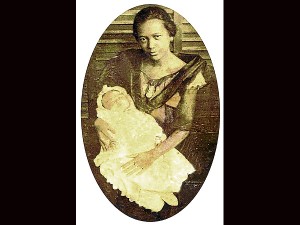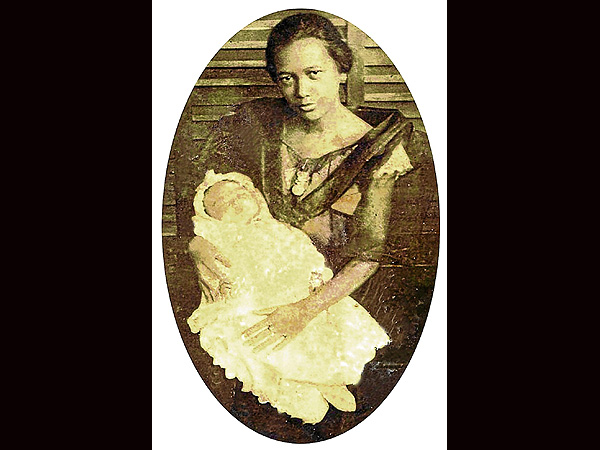 Our umbilical ties with our mothers begin even before life and extend beyond the grave so that losing a mother is the most difficult, and yet the most liberating, event in one’s life.
Our umbilical ties with our mothers begin even before life and extend beyond the grave so that losing a mother is the most difficult, and yet the most liberating, event in one’s life.
I lost my biological mother when I was six. Given such short notice, there was not enough time for good-byes.
But after the tears dry up, heaven provides surrogate mothers to help us finish an interrupted relationship. Soon, my mother-in-law became my mother-in-fact who filled in the shoes of the heroine in my mind.
When Nanay died, I lost my mother all over again. Only this time, she gifted her large brood a long good-bye, enough time for healing, enough time for her to hand down her instructions (bilin) to everyone—booking her final departure with grace.
Act of surrender
Nene Collantes Villariba knew she had lived, loved and served her family well and now it was time to go. With 13 children and 50 grandchildren, 60 years of serving as a teacher and civic leader, 64 years of marriage, there was nothing more to ask from a woman who made each day count to serve a larger community.
As she lay very ill in the hospital one evening in January, the patient told her doctor that she was throwing in the towel and surrendering to her Creator. The doctor, Ceres Villariba Romano, was also the patient’s daughter, which made her task doubly difficult. It was Nanay after all who persuaded her to become a doctor, pawning her jewelry to pay for her tuition.
When she was told that she would have to undergo hemodialysis for as long as she lived, Nanay knew that the end was near. Ill health in a weakening body was just the pretext. And she did not want the expense and inconvenience the whole process would bring on her children.
Ceres tried to convince Nanay that dialysis would relieve her edema which had already invaded her lungs and thus ease her breathing difficulty (dyspnea).
And then one day, she literally begged her loved ones to stop all medical measures and just let her go.
 “That tore me apart. I knew that Nanay was right, she has the right to forego treatment. That’s when my duty as a doctor ended and my role as a daughter began,” recalled Ceres.
“That tore me apart. I knew that Nanay was right, she has the right to forego treatment. That’s when my duty as a doctor ended and my role as a daughter began,” recalled Ceres.
Nanay began to tell those around her, “I see trees; there are no people, only trees.”
Although she was physiologically close to death, Nanay was not hallucinating. What she was seeing was vivid and real. She was relating what psychologists term as an instinctive memory playback to where all life began—to her mother.
Eldest daughter Girlie Villariba de la Torre was able to draw from Nanay what she experienced in between flitting in and out of body consciousness: “I was playing when my mother Beatriz called me out to help her: ‘Nene, find your aunts and uncles. Tell them we need them!’ But why? ‘Malapit na akong mamatay (I’m dying).’”
“I left the house and followed my mother’s instruction to find my relatives. We were in the Tagbakin hills. We had no neighbors.
“I remembered which path to take and found my relatives. They came back with me to help my mother die. I was 15 years old then, with no siblings and no other parent since my father was killed by the Japanese during World War II. I was orphaned that day my mother died,” she continued.
Nanay kept saying, “I hear hammering sounds, nagpupukpukan. They are getting louder.” She would continue to hear the hammering sounds for many days as she lay in bed.
But no such sounds were heard by those around her. Later, it dawned on everyone that Nanay was hearing the sounds of a coffin being made for her dying mother. In those years after the war in 1946, people had wooden coffins made by a carpenter.
Last wishes
The days and nights became one and she barely slept. That week in January, Nanay called her children to her bedside for her bilin. Two siblings in the United States, Melo and Deeda, were asked to come home. And her children took turns listening to what she wanted them to do.
 Her greatest concern was her husband, Cesar, 88, who was still recovering from a stroke. Nanay professed her great love for and fidelity to Tatay as they held hands. She demanded of her children, “Take care of Tatay and don’t let him become a pauper.”
Her greatest concern was her husband, Cesar, 88, who was still recovering from a stroke. Nanay professed her great love for and fidelity to Tatay as they held hands. She demanded of her children, “Take care of Tatay and don’t let him become a pauper.”
When uric acid and creatinine invaded her brain, Nanay’s inner perceptions became inversely heightened. She would recognize each one of those who approached her bedside. When shadows obscured her vision, she would identify people by their voices. She prayed every moment that she was conscious and wore her scapular and rosary.
Once, she turned to her eldest, Sonny, whom she had put through a psychology course, to confirm an inner vision. She told of seeing a light emanating from a portal. Sonny told her to embrace the light, telling her that it should be a positive light, wonderfully warm and loving. Sonny knew this from the near-death experiences of those who came back to tell their stories: that when it is time, the form of her deceased mother, the one she is most attached to, would be waiting at the end of the tunnel to lead her onward.
Final month
In her final month-and-a-half, Nanay bequeathed us her stories, the legacy of 81 years—of grandparents her children had never met, of how her lineage of mothers chose to be teachers.
In the final week of Nanay’s departure, which Tatay calls the final boarding phase, she fasted and refused all treatment.
Ceres and the other siblings sought counsel from the religious who were close to their parents—Carmelite Prioress Mother Catherine who is also a medical doctor and Lucena Bishop Emilio Marquez—to convince their mother to go through her weekly dialysis so she could have more time with us. But Nanay was resolute.
When told of how the late Jose Cardinal Sanchez, one of only six Filipino cardinals and a friend of the family, fasted on his deathbed as a sacrifice for world peace, Nanay did her own fast for five days and did not take even water. She refused all medications and her veins rejected all attempts to give her intravenous sustenance.
Superb timing
Ceres was anxious that Nanay would have brain seizures and that her body would swell and inflict tremendous pain, the symptoms of a renal crisis. But we were surprised at the outcome.
Nanay’s timing was superb. She chose to cross over on a Saturday, March 24, close to the feast of the Annunciation. When her body was brought to the Carmelite chapel for the final rites, the nuns called her death a graceful event and told the family: “Nanay Nene will go straight to heaven, having chosen to wear her scapulary for life and be welcomed by Mother Mary on the auspicious feast of the Annunciation.”
And in the end, she had no seizures, no convulsions, only dignity and amazing grace.
Ceres vividly remembers Nanay’s last moments: “As I held her in my arms the night before, she embraced me while patting my back gently as if to comfort me. And a few hours before she died, as her head rested on my shoulder, I felt her labored breathing and I whispered my love and gratitude to her.” Thereafter, Ceres deliberately stayed away and went to her clinic that morning.
At 12 noon, the nurse texted Ceres that Nanay’s vital signs could no longer be detected. “My heart was pounding heavily, almost screaming, ‘No, not yet, Nanay!’ I hurriedly went home and as I held the anemometer to check on Nanay’s blood pressure, there was complete silence in my stethoscope while I heard cries from behind me.”
Her heart had stopped beating and at that moment, Nanay was free.
“My Iron Woman is gone. Declaring Nanay dead was the most painful moment for me as I could only shake my head, kiss her and embrace her tightly,” Ceres said.
It was a liberating experience that Ceres declared for all of us: “Nanay is now one of my Avengers, the heroine of my time—and my real Santang Ina.”
A final gift
Death, which has been described as “allowing the spirit to depart from the body with ease as the life energy crosses over,” need not be traumatic for the dying or for the loved ones left behind.
The techniques of “booking your final departure” were the final precious gift that Nanay bequeathed to her eldest daughter. Girlie owed it to her mother Nene, who learned it from her mother Beatriz, who was in turn taught by her mother Antonia.
Even the little ones, ages 2 to 8, found crossing-over an event to be present in. Great-grandchild Angelique, 2, was happy to see that “Lola is in heaven.” Angelique “saw” Nanay twice after she died that week. Another great-grandchild, Buboy, 7, said that he, too, “saw Lola Nene in the skies.”
Girlie, the sociologist, had this to say of Nanay’s passing:
We are born mothers but it takes many generations of mothers to become good mothers. When our mothers nurture us in their wombs, we carry already the eggs for the next line, unlike boys who become the bearers when they reach puberty. That is why we celebrate Mother’s Day. To all the mothers: live, love and be brave. Our lives are bound by ties that go beyond this life. Love is the dynamo that gets us to the portal of another life.









































